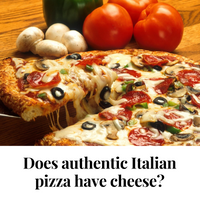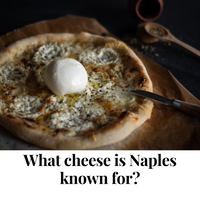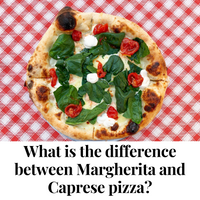
Different pizza crust types partially determine the taste, texture, thickness, and toppings of the pie. The pizza crust is the base of both a pizza and the recipe used to manufacture it. Italian crusts typically serve as a catalyst for pizza innovation since they have an impact on preparation, baking, appearance, and presentation. Pizza producers can expand their menu by experimenting with various pizza crust types or by sticking to the several styles of crust that characterize classic pies. Both new offers and heritage are beloved by customers.
Thin Crust
The usual characteristics of thin-crust pizza are thin, stretched cores and crunchy, doughy edges. Although some pizza dough varieties are less strong and work best with fewer toppings than others, there are still plenty of options:
- Neapolitan pizza
This first Italian crust pizza, so the legend goes, was created in Naples, Italy, probably in the 1800s. Neapolitan pizza has the status of being the "original" Italian pizza dough because of its colorful past. Neapolitan pizza must adhere to a very strict set of guidelines in order to produce its distinctively light, somewhat crunchy texture. A genuine Neapolitan Italian pizza dough must be hand-kneaded, no larger than 35 centimeters in diameter, and no thicker than one-third of a centimeter in the center. The "authentic Italian pizza" flavor and texture of Neapolitan dough baked in a wood-fired oven can never be replicated. Margherita and Marinara are two traditional Neapolitan pizza variants.
- New York Style crust
One of the most known varieties of Italian pizza dough is the New York style, which is frequently offered by the slice in large wedges. Since the early 1900s, "The Big Apple" and the Northeast have made it their signature pizza, with regional versions being found all around the country. The New York-style pizza dough is thin and malleable, with a slightly crispy outside that allows for simple, utensil-free cutting of large slices. High-gluten bread flour and the minerals in New York City water ingredients give New York-style pizza crust its distinct flavor and texture. The key differences between Brooklyn and NY-style pizza dough are that toppings usually go to the edge of the Brooklyn crust and that it is baked a little crispier. Our New York Style dough Balls would be ideal if you want to market a Brooklyn-style pizza crust to your clients.
- St. Louis Pizza
St. Louis pizza is a regional delicacy of the Midwest, distinguished by its round, thin, unleavened dough that resembles a cracker and is strong enough to support the cheddar, Swiss, and provolone cheese combination that this pizza is famous for, as well as various other toppings. Pies are traditionally cut into rectangles or "party squares" for serving.
- California Pizza
Chefs began experimenting with unusual toppings in the 1970s, which is when California pizza became popular. You can still buy flaky thin crusts in single-serve or customary proportions, topped with whichever you choose: eggs, artichokes, goat cheese, mustard, paté the possibilities are endless.

Thick crust
The heartiness of Italian crust pizza with a thick crust cannot be disputed. Hand preparation is required to roll out or form crusts that are at least 1/2" thick and typically thicker to suit deep dish baking pans. These tried-and-true thick-crust pizza classics show that they can withstand heavy sauce and toppings:
- Detroit-style pizza
The history of fact-checking that assertion is lost, although Sicilian pizza, with its thick, rectangular crust that Sicilian people proudly developed in opposition to Neapolitan thin crust, has some recognizable similarities to Detroit-style pizza. The medium-well-done, almost fried texture of Detroit-style pizza crust, which is a result of a well-oiled pan, sets it apart from other varieties of pizza crust.
- Chicago-style pizza
This is from the Windy City, a thick, traditional deep dish! It is undeniable that this is a unique variety of pizza dough with a ledge that permits huge amounts of toppings, cheese, and sauce, and by generous, we mean pizza slices up to 2 inches thick. The pies are baked in an oiled deep-dish pan to give the crust a crispy, occasionally buttery, fried appearance. In order to give the crust of Chicago Style pizza its distinctively yellow hue and to enhance its distinctive flavor and texture, maize flour, semolina, or food coloring are frequently used.
- Greek Pizza
This native of Greece is a delightful pan pizza with a bottom that is almost deep-fried, and it has become popular in the Eastern United States. Greek pizza is puffier and chewier than thin crust but not nearly as thick as Chicago style when compared to other types of pizza dough. Despite being called Greek pizza, the usual feta cheese, olives, and red onion toppings are frequently substituted. Any number of topping choices are complemented by a tomato paste foundation with a lot of oregano.
Conclusion
The Italian crust in pizza is very decadent and variant. With multiple varieties thin and thick, you get a wide assortment of pizzas to enjoy. Freeze-dried pizza also has a thin and thick variety for sure. We at Pizza Bien, make fresh, flavorful pizzas from natural ingredients from Italy. Choose Pizza Bien today for amazing and mouth-watering toppings and enjoy the real Italian pizza. Click here to buy now!









0 comments